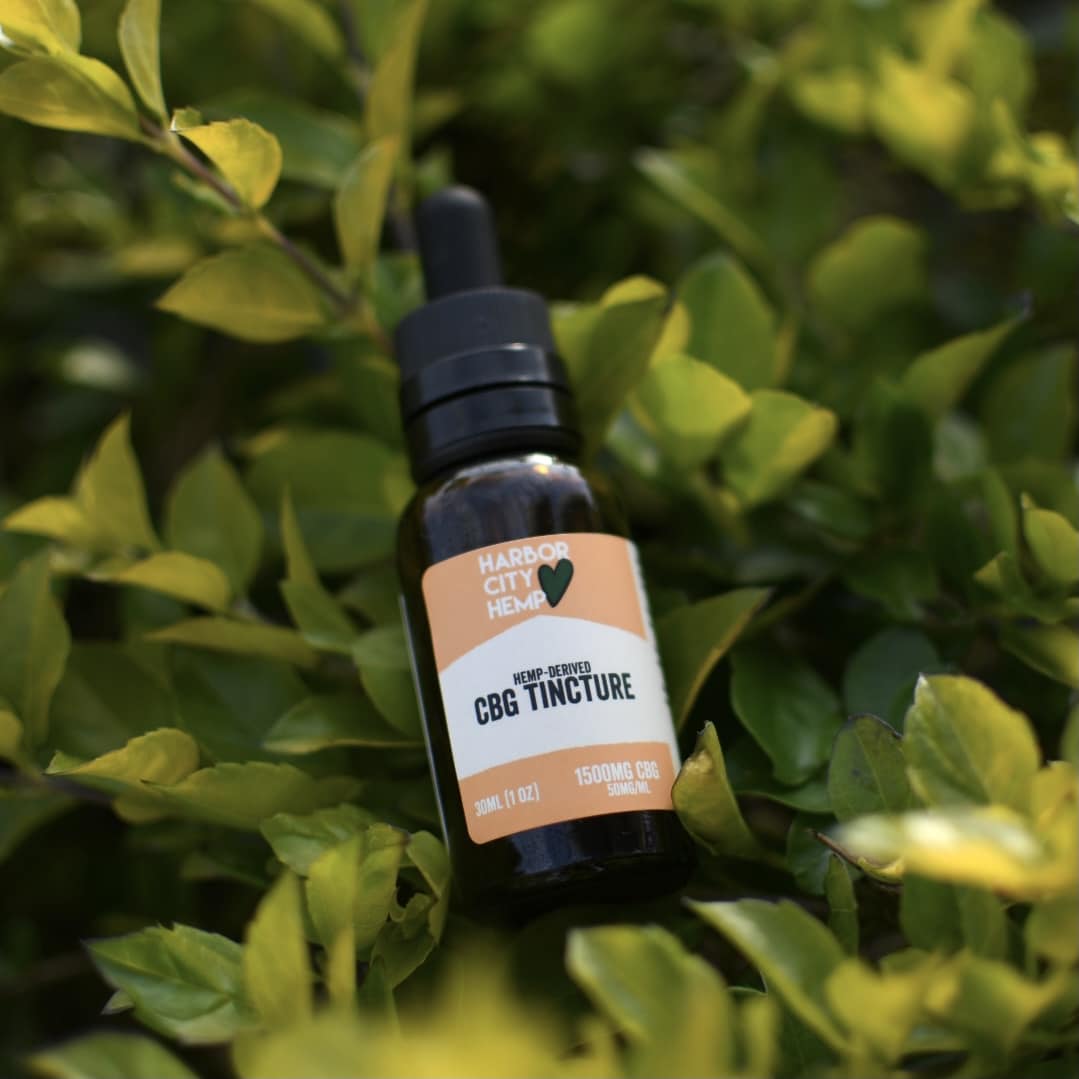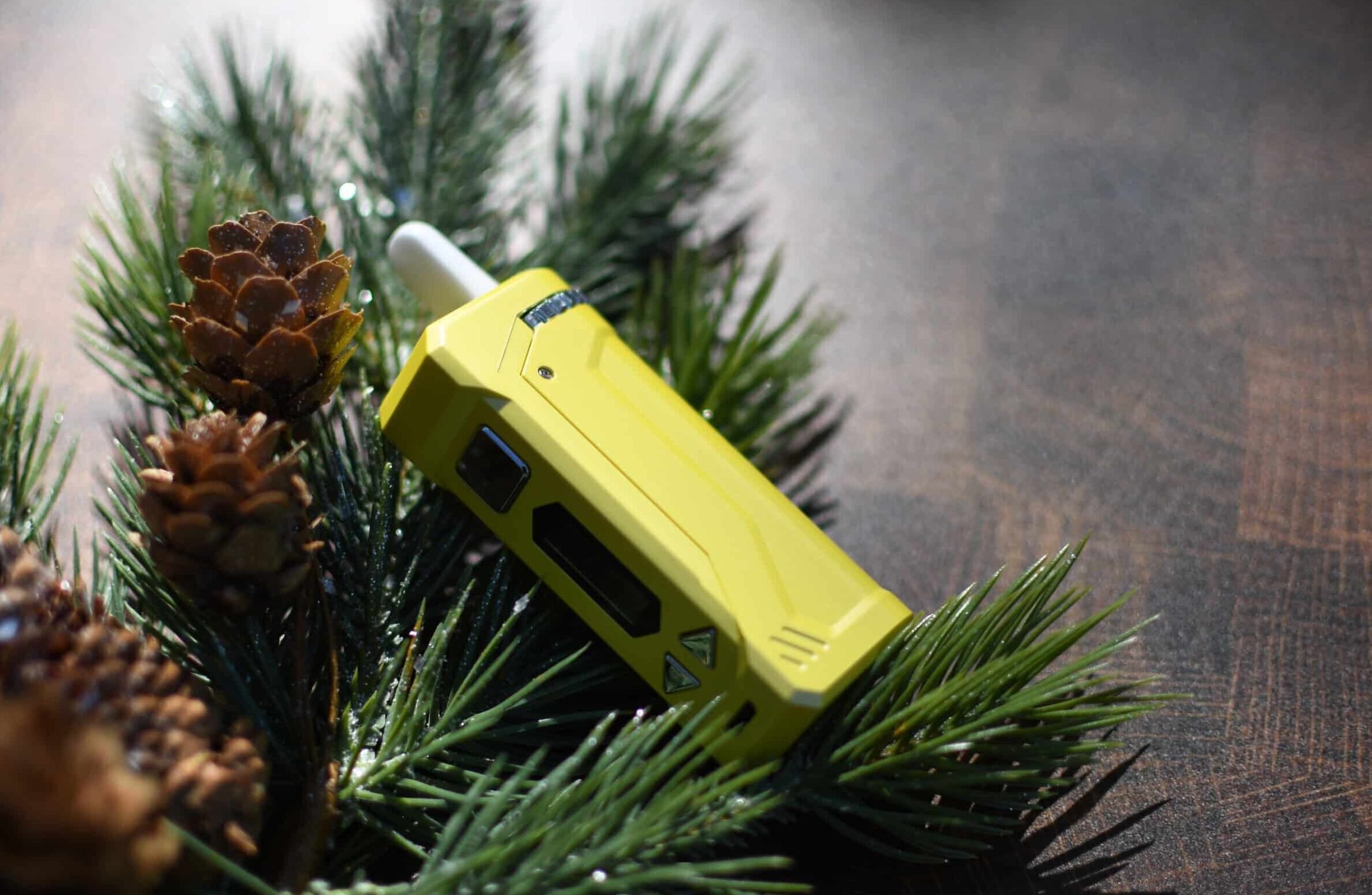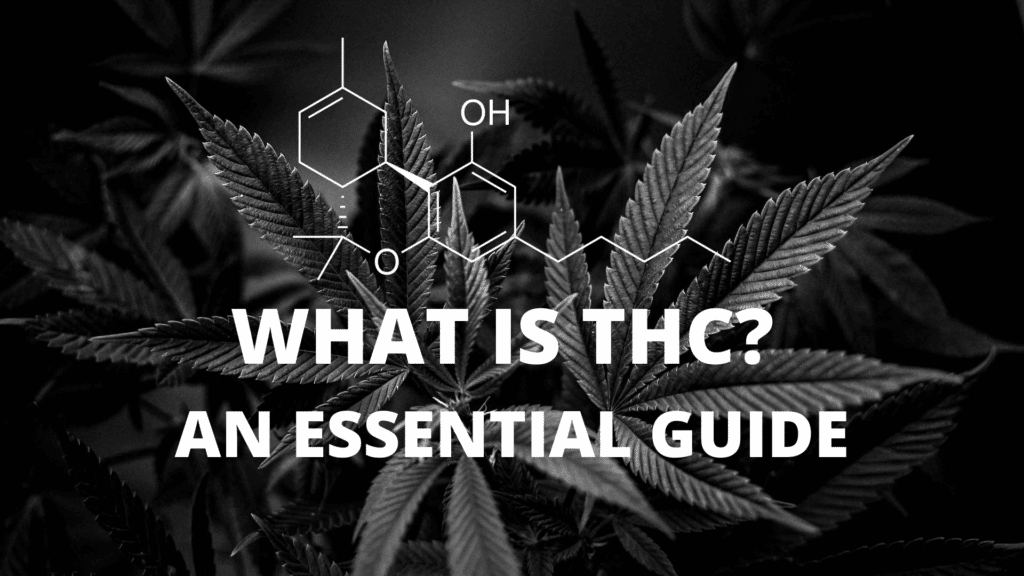Cannabis Category
What Is THC? An Essential Guide
THC, or tetrahydrocannabinol, is a cannabinoid molecule in the Cannabis Sativa plant that is recognized as the psychoactive ingredient responsible for making people feel high after consuming marijuana. According to the National Institute on Drug Abuse, THC is very much like the cannabinoid chemicals that the human brain naturally produces.
Cannabinoid receptors exist in brain regions responsible for memory, thinking, pleasure, coordination, and perception of time. According to NIDA, THC binds to these receptors, causing them to be activated, which affects memory, pleasure, movement, cognition, focus, coordination, and perception of time and sense.
You can consume THC by smoking cannabis or using oils, tinctures, edibles, capsules, etc.
THC Effects On Your Body
Upon smoking marijuana, the active ingredient THC rapidly travels through the lungs and into the bloodstream. Blood transports the chemical to the brain and other parts of the body. Absorption of THC in cannabis is slower when the substance is consumed as food or drink. As a result, most people feel the effects 30 minutes to an hour after taking it.
As we mentioned before, marijuana stimulates the brain regions with most of these receptors. People feel “high” as a result of this. There are also other effects:
- Alteration of senses, e.g., seeing colors brighter
- Altered time perception
- Mood changes
- Movement impairment
- Mouth dryness
- Problem-solving and thinking difficulties
- Memory impairment
- Hallucinations as a result of taking high doses
- Delusions as a result of taking high doses
- Psychosis (frequent use of high-potency marijuana is associated with a higher risk)
- Increased appetite
- Red eyes
- Laughter
- Increased heart rate
These may not be the only THC effects on the body, as everyone’s biology, tolerance, and mood is different.
What Are the Risks of THC on Your Body
The THC and other components in cannabis have various mental and physical side effects.
Physical Risks
Marijuana, based on your capacity, mood, and dosage, might cause breathing problems, child development issues during and after pregnancy, increased heart rate, and nausea and vomiting.
- Problems with breathing: Smoking marijuana can irritate the lungs. Hence, frequent smokers may experience similar problems to smokers of tobacco. The symptoms of these problems include frequent coughing and phlegm, frequent lung illness, and increased lung infection risk. People who smoke marijuana do not appear to have a higher risk of lung cancer.
- An increase in heart rate: After smoking marijuana, the heart rate remains elevated for up to three hours. Heart attacks may be more likely to occur due to this effect. The risk of heart attack is higher in the elderly and those with heart conditions.
- Pregnancy-related developmental problems: When pregnant women use marijuana, it may affect their fetus’s brain development. Preborn children who are exposed to marijuana are more likely to experience attention problems, memory, and problem-solving difficulties than children who are not exposed. According to some research, small quantities of THC pass into breast milk. Regular use of THC can reach levels in breast milk harmful to a baby’s brain development.
- An intense feeling of nausea and vomiting: Chronic marijuana use can cause Cannabinoid Hyperemesis Syndrome in some people. Due to this, users are prone to frequent periods of nausea, puking, and dehydration, which may require emergency medical attention.
Mental Risks
Marijuana also has some side effects on human mental health. These risks might include the following:
- Temporary hallucinations
- A temporary state of paranoia
- An increase in symptoms of schizophrenia is characterized by symptoms such as disorganized thinking, paranoia, and hallucinations.
The use of marijuana can also lead to other mental health issues, including depression, anxiety, and suicidal thoughts in teenagers. Teenagers’ brains are still developing, which may explain why they are experiencing this.
There are no serious side effects associated with CBD or THC. If taken correctly, neither of these can be fatal. Additionally, recreational users of THC are unlikely to develop an addiction.
THC Medicinal Uses
By the beginning of 2017, the majority of states legalized the use of marijuana as a medicine. The drug has also been legalized for recreational use in several states. Research is proving that, in the right dose, THC has a wide range of medical benefits. According to a 2016 study on mice, THC can enhance memory at minimal doses.
The FDA has approved two synthetic forms of THC to treat specific medical conditions. One is the FDA-approved drug Nabilone (Cesamet) which treats nausea caused by chemotherapy and vomiting.
The other one is dronabinol which the FDA approves as a treatment for nausea and vomiting associated with chemotherapy drugs, as well as stimulating a person’s appetite who is suffering from AIDS or anorexia.
As a result of its use, the THC in cannabis is often used to alleviate:
- Pain
- Muscle spasms
- Glaucoma
- Insomnia
- Appetite loss
- Symptoms of nausea
- Anxiety
- Epilepsy
- AIDS/HIV Symptoms
- MS or Multiple Sclerosis
- Inflammation
In What Ways Can THC Be Consumed?
Aside from smoking the dried leaves of the cannabis plant, there are several ways to consume THC.
Inhalation
In this manner, the drug is delivered quickly and creates the fastest psychoactive effects, usually within minutes. After inhaling marijuana, most of the cannabis compounds pass into the body through the lungs straight into the consumer’s bloodstream. The other advantage of inhalation is that it allows one to adjust dosage easily, reducing the likelihood of overconsumption.
The important thing to keep in mind is that these times can vary significantly depending on factors, including cannabinoid concentration, inhalation depth, and duration, smoking style, cannabis experience, or tolerance.
Inhaling marijuana can be done in two ways, smoking and vaporizing. The process of smoking marijuana involves burning the flowers and breathing in the active components Released. Vaporization works the same way, except that the plant is not burned but heated to a point where the active compounds emitted from the plant are formed as vapor. Consumers inhale this vapor.
Although vaporization is an excellent alternative to smoking, there are a few problems associated with oil-based vaporizers. With these new vaporizers, there has been a revolution in marijuana consumption. They have not yet been tested to see if they are safe or effective for long-term use.
Most of these devices use oils, a concentrated form of cannabis. In contrast to flowers that contain 5-20% THC, oils containing concentrated THC can contain up to 80%. A novice consumer might find this too strong. Additionally, the ingredients used in the process of oil extraction are not tested for safety, and residues may exist on the final product as a result.
Oral ingestion
THC can be taken orally as capsules, edibles, tinctures, or oils. Oils extracted from marijuana plants are commonly used in cooking, baking, or simply blending with food to formulate products we can consume either orally or as capsules.
Some retailers in states where the recreational use of marijuana has been legalized are selling cakes, gum, cookies, cereal, granola bars, and even chewing gum that contains marijuana.
It is also possible to add marijuana oil to common drinks. Various drinks can contain it, including teas, beer, and sodas. Adding marijuana leaves to tea is a long-standing tradition. Nowadays, however, tea has a much greater potency. When taken orally, the onset takes longer, has stronger effects, and lasts longer than inhalation. It is because, as they digest, these cannabinoids undergo chemical alteration and become stronger as a result. Additionally, when ingested orally, there is no loss of product due to binding to pipes or rolling papers.
Marijuana users who use it for medicinal purposes to ease chronic pain prefer oral consumption because the effects last longer, and less frequent consumption is necessary. The problem with ingesting marijuana is that it makes it difficult to adjust dosage due to the longer onset time.
A tincture is a liquid derived from cannabis plants infused with alcohol or alcohol and water. Users place a few drops under their tongues, and then it is rapidly absorbed into their bodies.
Because this form of marijuana contains a high concentration, is powerful, and acts quickly, it is generally used medically. However, because it produces such a strong effect, people often abuse it.
It is possible to find CBD tinctures that act quickly and provide a high potency without producing an intense high. The dosage of CBD found in this form is rarely abused; instead, it is prescribed as a stimulant to stimulate appetite in patients at risk of malnourishment caused by chemotherapy.
If you are looking for THC tinctures, you can try our tinctures. Read more here: Delta 8 THC Tincture (Hemp-Derived) Review.
Topical methods
It is also possible to induce THC in lotions, creams, salves, oils, gels, and bath salts, which are applied to the skin. Oils used for topical application are derived from the marijuana plant and are thicker than those incorporated into edibles.
Infused oils are applied to the skin and are absorbed through the skin to ease muscle pain and stiffness. Upon entering the bloodstream, cannabinoids bind to receptors found in your body’s endocannabinoid system. In about an hour, you should begin to see results.
Using creams and lotions containing cannabis is easy and convenient because you can use them on any part of your body. In particular, they benefit those seeking to improve their skin, particularly the dry parts of the body, like the elbows and knees. There are even people who use facial cannabis creams for beauty purposes.
Balms and salves that are made from cannabis work similarly to creams and lotions but with the potential for even greater health benefits. The texture of salves is usually softer than that of lotions due to the presence of beeswax. Skin disorders such as psoriasis and other skin conditions can be relieved by medicinal salves.
Gels have a cooling effect, making them ideal headache relievers. Applying a few drops to the temples and forehead can alleviate sinus pressure and provide a cooling sensation to relieve tension headaches.
There is also a lot of interest in this method among the elderly as it relieves localized pain without producing a psychoactive effect.
Sublingual
You can also consume Marijuana by placing it under the tongue and holding it in your mouth. The human body contains numerous blood vessels that are capable of absorbing cannabinoids. The most common types of these products are dispensable strips, sublingual sprays, or lozenges containing medication.
As a sublingual spray, Sativex contains the entire spectrum of natural cannabinoids, the only clinically approved cannabinoid medication. Usually, this method is used by patients who do not want to be exposed to smoke’s harmful effects.
The use of sprays is also prevalent in areas where cannabis remains illegal due to the difficulty of detecting them. Some consumers combine sprays with marijuana smoking, spraying different flavors on joints and blunts.
Generally, the onset time for these consumption methods resembles those of oral consumption, but some studies report an earlier onset time.
Harbor City Hemp Discount Program
HarborCityHemp is an online store where you can find all of the high-quality CBD and THC-infused products you can think about for fair prices.
Our products are federally-legalized, third-party lab tested with controlled amounts of THC. Recently, we started our Harbor City Hemp Discount Program for veterans, those with long-term medical disability benefits, or people with low incomes. If proven eligible, you are able to enjoy a 30% discount on our products.
On top of that, all of our customers can purchase our Harbor City Hemp THC-Free CBD Tincture for 10% off.
You can find our other products here: Harbor City Hemp CBD Products.
Conclusion
THC is the molecule in the cannabis plant that is responsible for making consumers feel euphoric. Aside from being euphoric, people use THC for medicinal purposes. Patients usually use THC for relieving muscle pain, managing insomnia and epilepsy, and reducing the symptoms of HIV/AIDs or Multiple Sclerosis.
However, using high doses of THC may result in mouth dryness, red eyes, increased heart rates, and hallucinations. So make sure to find out what’s your tolerance before using THC. Also, remember that THC effects usually take around 30 minutes to kick in, so refrain from overusing it during the onset time.
FAQ
1. What is the difference between THC and CBD?
Cannabis plants contain both CBD and THC, which are cannabinoids. Despite their similarities in structure and the conditions they may help address, the most significant difference is THC causes users to become high, whereas CBD does not.
2. What does THC stand for in medical terms?
THC, or Tetrahydrocannabinol, is a major psychoactive compound and one of the 113 cannabinoids found in cannabis. The synthetic form of THC, dronabinol, has been approved by the FDA for reducing chemotherapy-induced nausea and vomiting, as well as stimulating appetite in HIV/AIDS patients with anorexia.
3. How quickly does THC work?
THC onset time depends on many factors, such as the form of cannabis and the person’s experience. For example, edibles typically take between 30 and 60 minutes. And when THC is consumed orally, it takes 30 to 90 minutes to take effect.
4. How does THC make you feel?
THC triggers the brain region responsible for pleasure, like food and sex. As a result, your body releases a chemical called dopamine, resulting in a euphoric, relaxed state.




